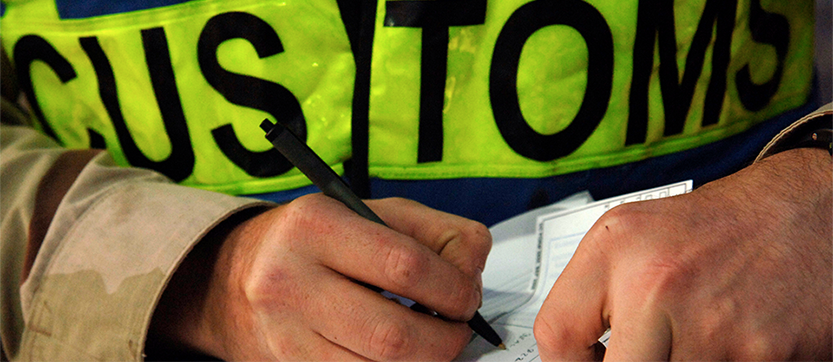The TRIS Customs module offers various “extras” for shippers and logistics operators wishing to operate under the “inward processing” Customs regime.
For example, the stock administration is updated automatically, and the solution includes a module for conversion from unprocessed to processed goods.
But the main feature is the handy decision table listing the countries that offer a preferential trade tariff along with the respective import duties.
This enables users of the TRIS Customs Management System to optimise their imports.
What exactly is inward processing?
“Inward processing” is a Customs regime under which non-EU goods can be imported with exemption from import duties, trade policy measures (e.g. anti-dumping tariffs) and VAT, on condition that they are used to process goods (i.e. to add value to them) in the EU, and that the results of this processing are exported in turn from the EU in the form of processed (value-added) goods.
This processing can take various forms:
- Manufacturing (assembling, fitting or modifying the imported goods to make them into something else, thereby adding value to them)
- Reworking (to create new goods as a result)
- Repair (including overhaul and adjustment)
- Use or application (using goods as part of the production process that enables or facilitates making something else). It includes all goods (catalysts, chemical retardants or accelerants, etc.) that are not found in the finished (processed) product but that enable or facilitate its production, even if they are partially or completely used up during the process.
It does not include:
- Fuels or energy sources (unless they are used for testing the end results of the processing, or for detecting faults in the import goods to be repaired)
- Lubricants (unless used for test runs, adjusting or de-moulding of the end results of the processing)
- Tools or equipment.
There are two possible systems of exemption:
- Suspension (no import duties etc. have to be paid, but a deposit has to be paid to Customs)
- Refunding (the import duties paid are refunded once the processed goods have been exported).
What conditions have to be met in order to benefit from this regime?
The processing has to be carried out in the EU, and the company doing it (or having it done) must be based in the EU. The applicant must have a permit.
There are two types of permit:
- Conventional permit: the declaration of the goods coming under the regime is cleared item-by-item
- Aggregation permit: clearance is done all-inclusive (aggregated) for all declarations made under this regime on the same date.
Most operators opt for the latter: instead of Customs clearing the IM1 declarations document by document, the permit holder makes a single clearance statement every quarter.
In practice most companies combine both systems.
Companies wishing to take advantage of the regime must do additional administration comprising the following tasks:
- Chronological recording of delivery of the products to be processed (i.e. delivery to the processor)
- Conversion from unprocessed to processed (conversion statements)
- Import-export balance: a comparative statement of the respective quantities of goods that are imported and then re-exported after processing (statement sheets).
When do import duties nevertheless have to be paid?
Import duties have to be paid if:
- The imported goods are not all used in the new, processed product, and if the unused goods are then sold off
- Not all the processed goods are exported from the EU. In this case import duties have to be paid on the initial products incorporated in the goods that are not exported.
- Processed products obtained under the suspension system are exported to FTA (Free Trade Agreement) countries with a no-drawback rule for preferential trading tariffs. In this case duty must be paid on the non-EU components used in processing the processed products. These are products which after processing qualify as being of European origin and are exported as such under an EUR certificate.
- The processed goods are exported to Turkey with an ATR certificate.
What does TRIS Customs offer for this regime?
With TRIS Customs, all the accounting obligations (clearance declaration 51, stock administration, conversion statements and export declarations) are automatically archived in digital form and can be printed out quarterly (as required under the regime).
But the key feature is the decision table that keeps the import duties to be paid as low as possible.
How does it work?
Based on the stock administration, the system has an overview of all raw materials present in the manufacturer’s warehouse, and the countries from which they were imported:
- EU member state
- Third country
- FTA country
- GSP country
Depending on the export destination of the processed product, the decision table presents proposals for which raw materials should be used in order to keep the import duties as low as possible.
For example: suppose the processed product is exported to a third country without FTA. In this case the way to avoid having to pay import duties is to use raw materials that also come from third (i.e. non-EU) countries.
If no such raw materials are available, then the next best option is to use materials from GSP countries.
If these are not available, then the third-best option is materials from FTA countries.
In this way you can always be sure of paying the lowest import duties.

